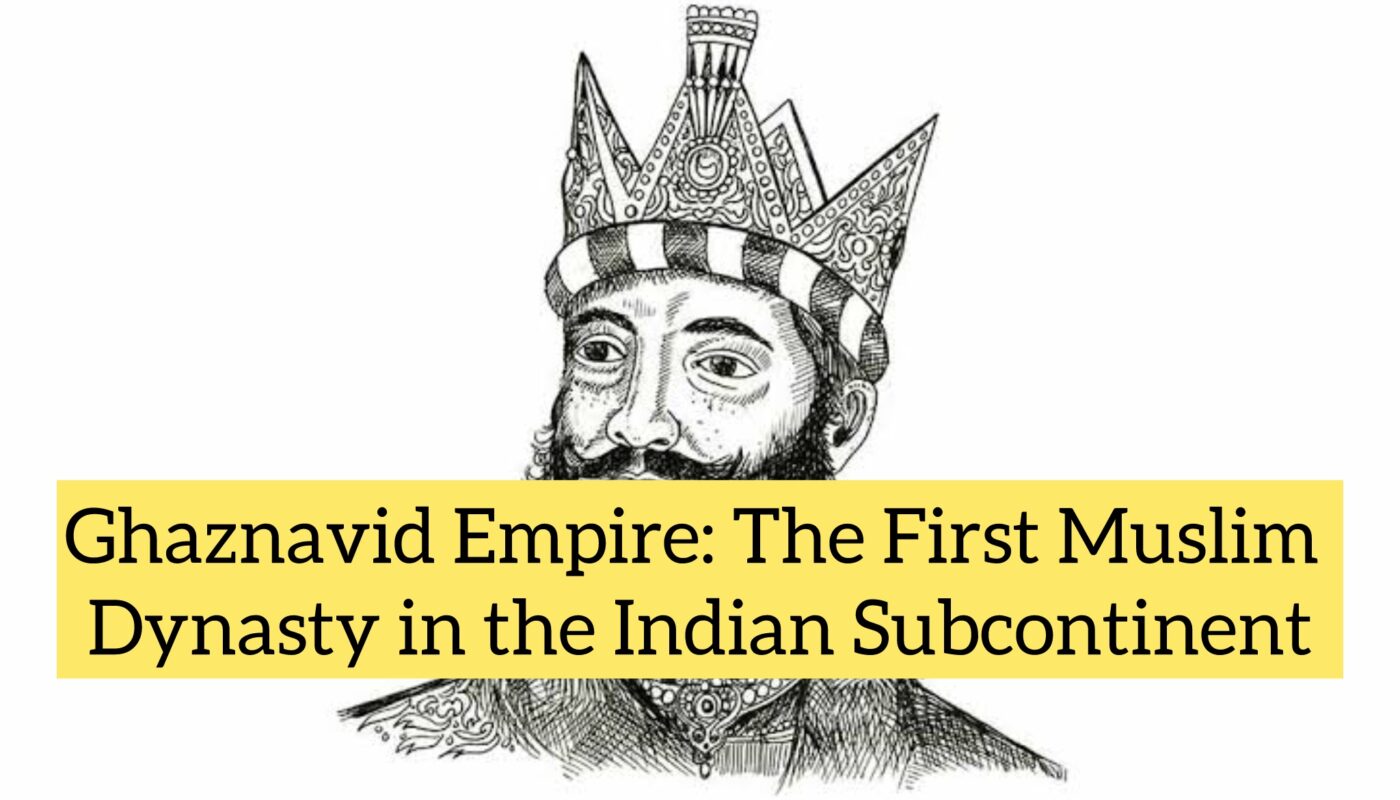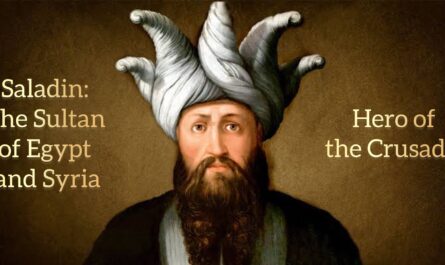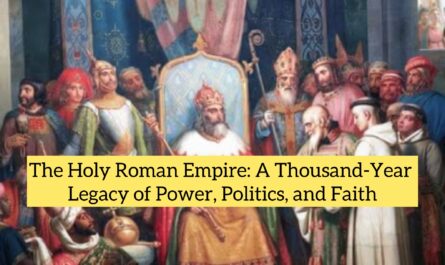Introduction
The Ghaznavid Empire (963–1186 CE) was a Sunni Muslim dynasty of Turkic origin that rose to power in eastern Iran, Afghanistan, and northwestern India. It was the first significant Muslim dynasty to rule parts of the Indian subcontinent, pioneering Islamic expansion into South Asia.
Founded by Sabuktigin, a former Turkic slave, and expanded by his son Mahmud of Ghazni, the Ghaznavid Empire became a formidable military power and a beacon of Persian-Islamic culture. Its rule laid the foundation for centuries of Islamic influence in India, long before the Delhi Sultanate and Mughal Empire.
Origin and Background
Ethnic and Political Roots
-
The Ghaznavids were Turkic Mamluks (military slaves) of the Samanid Empire, a Persianate dynasty ruling from Central Asia.
-
Sabuktigin, a former slave and general, seized power in Ghazni (in modern-day Afghanistan) in 977 CE.
-
He established an independent dynasty, naming it after the city of Ghazni.
Territorial Base
-
Capital: Ghazni (modern-day Ghazni, Afghanistan)
-
Other major cities: Lahore, Nishapur, Herat, Multan
Rise of the Empire
1. Sabuktigin (r. 977–997)
-
Consolidated power in eastern Afghanistan
-
Defended his territory against Hindu Shahi rulers in northwest India
-
Set the stage for future expansions
2. Mahmud of Ghazni (r. 998–1030)
-
Most famous Ghaznavid ruler
-
Known for his 17 invasions of India between 1000 and 1027 CE
-
Expanded the empire from Khurasan (Iran) to the Indus River
-
Declared himself Sultan, signaling political independence from the Abbasid Caliphate
Mahmud of Ghazni: The Empire Builder
Military Campaigns
-
Launched multiple campaigns into northern India, targeting:
-
Hindu Shahi kingdoms
-
Wealthy temples (e.g., Somnath Temple, 1025 CE)
-
Strategic cities like Delhi, Kannauj, and Mathura
-
Motives for Invasion
-
Spread of Islamic rule and culture
-
Acquisition of wealth, especially from temples
-
Consolidation of power and prestige
Achievements
-
First Muslim ruler to establish firm control in parts of India
-
Patron of Islamic scholarship, Persian literature, and architecture
-
Built Ghazni into a major Islamic cultural and intellectual center
Territorial Extent at Its Peak
Under Mahmud and his successors, the Ghaznavid Empire stretched from:
-
Khwarazm and Rayy in the west
-
Punjab and Sindh in the east
-
Khurasan, Sistan, and Balkh in the north
![Would you like a visual map of the Ghaznavid Empire’s peak territorial extent?]
Culture and Contributions
Persianization of the Empire
-
Though Turkic by origin, the Ghaznavids embraced Persian language and culture
-
Persian became the official language of administration and literature
-
Continued the legacy of the Samanid Persian Renaissance
Literature and Art
-
Mahmud patronized famous scholars and poets like:
-
Al-Biruni – polymath, mathematician, and historian
-
Ferdowsi – author of the Shahnameh, the Persian national epic
-
Architecture
-
Built palaces, mosques, and minarets in Ghazni and across Afghanistan
-
Notable structures include:
-
The Minaret of Jam
-
The Friday Mosque of Ghazni
-
Governance and Administration
-
Centralized monarchy led by a sultan
-
Adopted Persian bureaucratic models
-
Relied on ghulams (slave soldiers) and Turkic generals for military control
-
Provinces governed by appointed walis or emirs
Relations with Other Powers
-
Recognized the Abbasid Caliphate for religious legitimacy
-
Fought frequent wars with:
-
Hindu Shahi kingdoms
-
Qarakhanids and Seljuks in Central Asia
-
-
Competed with the Buyids and Fatimids for Islamic leadership
Decline and Fall
Internal Weakness
-
After Mahmud’s death, the empire weakened due to:
-
Succession conflicts
-
Increasing autonomy of provincial governors
-
Financial strain from constant military campaigns
-
Seljuk Pressure
-
Lost much of their western territory (Iran and Khurasan) to the rising Seljuk Turks in the mid-11th century
Loss of Indian Territories
-
Delhi and northern India became increasingly difficult to control
-
Lahore became a secondary capital after the loss of Ghazni
End of the Dynasty (1186)
-
The last Ghaznavid sultan, Khusrau Malik, was defeated by Muhammad Ghori
-
Ghori’s conquest marked the beginning of the Ghurid Empire and the Delhi Sultanate
Legacy of the Ghaznavid Empire
1. Introduction of Islam to India
-
The Ghaznavid campaigns created the first sustained Muslim presence in India
-
Paved the way for long-term Islamic rule in the subcontinent
2. Persian-Turkic Synthesis
-
Influenced later dynasties like the Delhi Sultanate, Mughals, and Ottomans
-
Established a model of Turkic rulers using Persian culture and Islam as unifying forces
3. Patronage of Knowledge
-
Ghazni became a center of Islamic learning, science, and literature
-
Preserved and promoted classical Islamic and Persian thought
Notable Ghaznavid Rulers
| Sultan | Reign | Key Achievements |
|---|---|---|
| Sabuktigin | 977–997 | Founder of the dynasty |
| Mahmud of Ghazni | 998–1030 | Expanded empire; 17 invasions of India |
| Mas’ud I | 1030–1040 | Lost western provinces to Seljuks |
| Ibrahim | 1059–1099 | Period of cultural rebuilding |
| Khusrau Malik | 1160–1186 | Last ruler; defeated by Muhammad Ghori |
Timeline of Key Events
| Year | Event |
|---|---|
| 963 | Sabuktigin rises as military leader under Samanids |
| 977 | Ghaznavid dynasty founded |
| 998 | Mahmud of Ghazni becomes sultan |
| 1000–1027 | Invasions of northern India |
| 1030 | Mahmud dies; succession struggles begin |
| 1040 | Seljuks defeat Mas’ud I at Battle of Dandanaqan |
| 1186 | End of the Ghaznavid Empire; fall of Lahore to Ghurids |
Frequently Asked Questions (FAQs)
Who founded the Ghaznavid Empire?
The empire was founded by Sabuktigin, a Turkic slave general who rose to power in Ghazni.
What was Mahmud of Ghazni known for?
He was known for his military campaigns into India, his patronage of Persian culture, and transforming Ghazni into a prominent Islamic capital.
Was the Ghaznavid Empire Persian or Turkic?
Ethnically Turkic, the Ghaznavids adopted Persian language, administration, and culture, forming a unique Persian-Turkic synthesis.
What caused the fall of the Ghaznavids?
Internal divisions, loss to the Seljuks, and eventual conquest by the Ghurids led to the fall of the Ghaznavids.
What was their impact on Indian history?
They were the first major Muslim dynasty to rule parts of India, establishing a precedent for Islamic rule and cultural exchange in the region.
Conclusion
The Ghaznavid Empire was a pivotal force in medieval Islamic and South Asian history. From humble beginnings as Turkic military slaves, the Ghaznavids built an empire that stretched across Iran, Central Asia, and northern India. Their greatest legacy lies in the introduction of Islam to the Indian subcontinent, the promotion of Persian-Islamic culture, and the creation of a political model that influenced empires for centuries to come.
Whether seen through the lens of Mahmud’s conquests, Ghazni’s intellectual brilliance, or their cultural fusion, the Ghaznavids occupy a crucial chapter in the story of Eurasian history.



